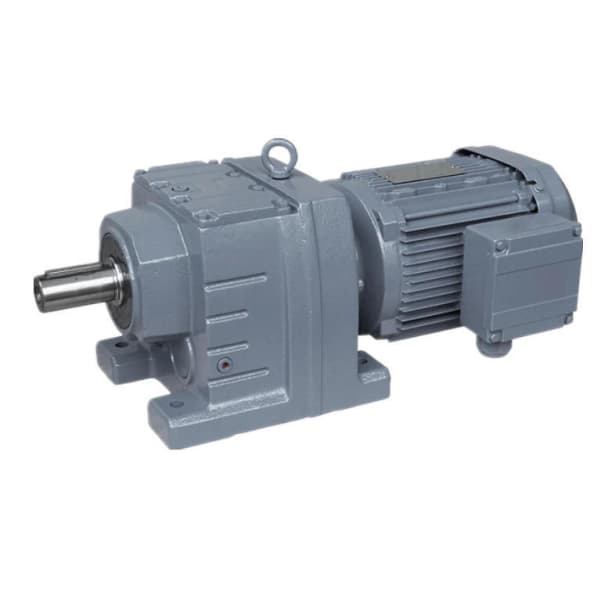Pumps are essential components in modern food processing plants. Whether a factory produces tomato paste, زبدة الفول السوداني, cooking oil, زبادي, كاتشب, chocolate slurry, or beverage products, pumps determine production stability, hygiene level, product texture, وكفاءة الطاقة. Among the many types of industrial pumps, rotary pumps, centrifugal pumps, screw pumps, and gear pumps are the four most commonly used in food machinery due to their reliability and ability to handle a wide range of viscosities.
نحن, آلة الغذاء دي تي, provides a deep comparison of how these pumps work, their structural differences, advantages and disadvantages, and most importantly — how they are applied in real food production lines.

1. Rotary Pumps (Positive Displacement Rotary Pumps)
1.1 How Rotary Pumps Work
Rotary pumps are positive displacement pumps, meaning they move a fixed amount of fluid per rotation. They use rotating elements (such as lobes, gears, screws, or vanes) to trap liquid and push it from the inlet to the outlet.
They create a steady, pulse-free flow, making them suitable for viscous or shear-sensitive products.
1.2 Key Characteristics
- Excellent for medium to high-viscosity fluids
- Very stable pressure output
- Low pulsation
- Can self-prime
- Suitable for gentle material handling (does not destroy product texture)
1.3 المزايا
- Can handle thick products like pastes, الكريمات, مهروس
- Suitable for hygienic CIP/SIP cleaning
- Maintains product integrity (low shear)
- Consistent and accurate flow
1.4 العيوب
- More expensive than centrifugal pumps
- Requires precise machining
- More complex maintenance
1.5 Applications in Food Machinery
Rotary pumps are commonly used in:
- Tomato paste processing lines
Transferring high-viscosity tomato purée or concentrate (28–36°Brix) - Peanut butter and sesame paste machines
Feeding thick slurry after colloid mill processing - Ketchup, mayonnaise, cheese sauce production lines
For stable metering and dosing - Chocolate production equipment
Pumping chocolate liquor without introducing air - Syrup and honey processing
Their ability to move viscous fluids gently makes them a top choice in high-end food machinery.

2. Centrifugal Pumps
2.1 How Centrifugal Pumps Work
Centrifugal pumps use a rotating impeller that imparts velocity to the liquid. The velocity is then converted into flow and pressure as the liquid exits the impeller into the pump casing.
هم not positive displacement pumps; they depend on fluid velocity, making them ideal for low-viscosity liquids.
2.2 Key Characteristics
- الأفضل ل thin liquids (water-like)
- High flow rate capability
- Lower pressure compared to positive displacement pumps
- Sensitive to downstream pressure
2.3 المزايا
- Very cost-effective
- Simple structure and easy maintenance
- Ideal for large flow and continuous operation
- Energy-efficient for low-viscosity fluids
2.4 العيوب
- Cannot handle viscous products effectively
- Flow decreases sharply with higher back-pressure
- Cannot self-prime unless specially designed
2.5 Applications in Food Machinery
Centrifugal pumps are widely used in:
- Beverage production
Transferring juice, شاي, flavored water, soda bases - Dairy processing lines
لبن, whey, yogurt slurry (low-viscosity) - Vegetable washing systems
Recycling washing water - Cooling water circulation
Jacketed kettle, heat exchanger systems - Hot water and CIP systems
Whenever the product flows easily, centrifugal pumps are the most economical choice.

3. Screw Pumps (Twin-Screw, Single-Screw Pumps)
3.1 How Screw Pumps Work
A screw pump uses one or more intermeshing screws rotating inside a sealed chamber. As the screws rotate, they create sealed cavities that move fluid from the inlet to the outlet.
Twin-screw pumps are especially popular in food industries due to hygienic design.
3.2 Key Characteristics
- Excellent for both قليل- and high-viscosity fluids
- Very high suction capability
- Smooth and steady flow
- Can pump liquids with soft solids (like fruit pieces)
3.3 المزايا
- Handles thick, sticky, or shear-sensitive materials
- Extremely stable flow (no pulsation)
- Capable of high-pressure output
- Can handle particles without damage
- Suitable for high temperature or abrasive fluids
3.4 العيوب
- High manufacturing cost
- Requires specialized maintenance
- Power consumption is higher than centrifugal pumps
3.5 Applications in Food Machinery
Screw pumps are used when both viscosity and gentle handling are required:
- Tomato paste production line
Gentle transfer without breaking fibers or seeds - Fruit jam and puree processing
Can transfer pastes with fruit chunks - Ice cream production
For transferring semi-frozen mixes - Viscous sauces
Cheese sauce, chili sauce, BBQ sauce - Chocolate and cocoa liquor transfer
Ensures smooth texture - Meat processing machinery
Transferring minced meat slurry
Twin-screw pumps are often the premium solution in high-value production lines.
4. Gear Pumps
4.1 How Gear Pumps Work
Gear pumps use two meshing gears, usually external gears, to trap liquid between one gear tooth and the casing, transporting fluid from inlet to outlet.
They are also positive displacement pumps.
4.2 Key Characteristics
- Suitable for medium-viscosity liquids
- Provides consistent flow
- Compact and efficient
4.3 المزايا
- Simple structure
- Precise metering and dosing capability
- Good for oils, شراب, and lubricants
- Self-priming capability
4.4 العيوب
- Not suitable for fluids with particles
(particles can damage gears) - Higher shear compared to screw or rotary lobe pumps
(not ideal for fragile food products) - Wear increases if pumping abrasive materials
4.5 Applications in Food Machinery
Gear pumps are most commonly used for:
- Cooking oil transfer systems
زيت النخيل, soybean oil, peanut oil - Sugar syrup, glucose, fructose lines
- Chocolate oil and cocoa butter pumping
- Metering machines for small-dose filling
- Viscosity-stable liquids
In food factories, gear pumps excel in precise dosing systems.
5. Direct Comparison Table
| Pump Type | Best For | Viscosity Range | Flow Stability | Shear Level | Typical Food Applications |
|---|---|---|---|---|---|
| Rotary Pump | Thick pastes, الصلصات, الكريمات | Medium–High | ممتاز | قليل | معجون الطماطم, mayonnaise, cheese sauce, زبدة الفول السوداني |
| Centrifugal Pump | Water-like liquids | قليل | جيد | واسطة | لبن, عصير, ماء, beverage base |
| Screw Pump | High-viscosity & particle-containing fluids | Low–High | ممتاز | Very Low | Jam with fruit pieces, ice cream mix, الشوكولاتة |
| Gear Pump | زيوت, شراب | Low–Medium | جيد | Medium–High | Cooking oil, glucose syrup, chocolate butter |
6. How to Select the Right Pump for Food Machinery
6.1 Based on Viscosity
- < 200 cP (water-like): Use centrifugal pump
- 200–2,000 cP (شراب, زيوت): Use gear pump
- 2,000–20,000 cP (الصلصات, مهروس): Use rotary pump
- 20,000–200,000+ cP (very thick pastes): Use screw pump
6.2 Based on Sensitivity of Product
- Highly sensitive (كريم, زبادي, الشوكولاتة): Screw / Rotary
- Non-sensitive (ماء, عصير): الطرد المركزي
- Requires precision dosing: Gear pump
6.3 Based on Solid Content
- Large particles or fruit chunks: Twin-screw pump
- Small seeds or small particles: Rotary pump
- No particles: Centrifugal or gear pump
7. Example Applications in Complete Food Machinery Lines
7.1 خط إنتاج معجون الطماطم
- Centrifugal pump → washing water circulation
- Screw pump → moving crushed tomatoes
- Rotary pump → transferring concentrated tomato paste
- Gear pump → dosing oil or additives
7.2 خط إنتاج زبدة الفول السوداني
- Screw pump → transferring roasted peanuts to the colloid mill
- Rotary pump → pumping peanut butter to storage tank
- Gear pump → dosing peanut oil into recipe mixer
7.3 Beverage Production Line
- Centrifugal pumps dominate due to low viscosity:
Juice, شاي, purified water, flavor concentrates
7.4 Ice Cream Processing Line
- Screw pump → ice cream mix
- Rotary pump → syrup inclusion
- Centrifugal pump → cleaning solution circulation (CIP)
What is the differences between rotary pumps, centrifugal pumps, screw pumps, and gear pumps?
Each pump type plays a unique role in food machinery:
- Centrifugal pumps are ideal for low-viscosity, high-flow operations such as beverages and dairy.
- Rotary pumps handle medium- to high-viscosity sauces and purees with gentle flow.
- Screw pumps are the most versatile, managing thick, shear-sensitive, and particle-containing materials.
- Gear pumps specialize in oils and syrups requiring precise metering.
Choosing the right pump ensures product quality, production efficiency, and long-term durability of food processing equipment. In modern factories, multiple pump types are often used together to build a complete and efficient production line.
